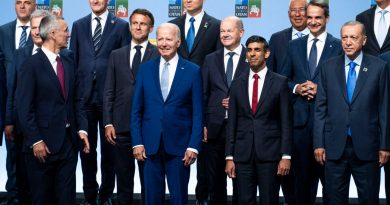Russia-Ukraine War: Russia Says It Shot Down 2 Drones Near Moscow Overnight

Ukraine’s counteroffensive may be moving at a slower pace than Western leaders would like, but a new analysis by a British think-tank suggests that’s because those same Western leaders moved too slowly to send Ukraine the tanks, armored vehicles and ammunition it needed.
The analysis, published Tuesday by the Royal United Services Institute for Defense and Security Studies, regarded as one of the world’s leading defense and security think tanks, concluded that Western officials hesitated too long over whether to send key weapons. It says that decisions were delayed even though there was widespread understanding more than a year ago of what would be required for Ukraine to push back Russian forces and reclaim territory in the east and south.
The findings echoed the warnings President Volodymyr Zelensky of Ukraine said he gave allies ahead of the counteroffensive that began in early June.
Jack Watling, a senior expert on land warfare who wrote the analysis, said the war in Ukraine has “highlighted significant deficiencies” in how Western governments respond to rising threats.
“The most glaring deficiency is the inability of Ukraine’s partners to appreciate the lead times between decisions and their desired effects,” Mr. Watling wrote. “This deficiency is being demonstrated at great cost in Ukraine’s current offensive.”
For example, he said, officials in Western capitals were becoming aware in July 2022 of what Ukraine would need for an offensive, and were told directly starting last September of specific and necessary training, equipment and support requirements. Even so, Mr. Watling noted, decisions to fulfill the requests were not made until mid-January.
That is when Britain, France, Germany and the United States agreed to send Western tanks and other armored fighting vehicles to Ukraine, essentially allowing other NATO countries to follow suit. The moves also included training for Ukrainian forces on the sophisticated weapons systems. While British-made Challenger 2 tanks and Leopard tanks manufactured in Germany are already being deployed to the ongoing counteroffensive, the American-made Abrams tanks are not expected to reach Ukraine until early fall.
“Had the decision to equip and train Ukrainian forces been taken and implemented when the requirements were identified in the autumn, Ukraine would have had a much easier task in reclaiming its territory,” Mr. Watling said.
He also noted a “massive consumption” of ammunition by Ukraine, which NATO members realized as early as June 2022 was draining their own stockpiles, putting military readiness at risk. The United States and European governments are grappling with how to boost ammunition production, a process that can take years as domestic weapons industries struggle to build back capacity to Cold War levels, although manufacturers are racing to meet demand.
To be sure, Western governments have provided tens of billions of dollars in weapons to Ukraine since Russia’s full-scale invasion in February 2022, and last month, Mr. Zelensky expressed gratitude for the military assistance that has continued despite the risk of waning Western political support. The United States has been the biggest benefactor of Ukraine’s military by far, but presidential elections next year could determine whether the aid will remain at current levels.
That is one reason Western leaders have pressed Ukraine to push aggressively during the counteroffensive and win enough decisive gains to force Russia into peace negotiations. But the fight has unfolded slowly, with Ukraine’s forces tripped up by minefields and outgunned by Russian forces.
Mr. Watling said the sluggish Western efforts to prepare Ukraine for the fight showed that “the institutional memory of how to cohere the operational level of war has atrophied.”
“This malady is correctable,” he said, “but only if we can acknowledge that there is a problem to be addressed.”
Source – NY Times




